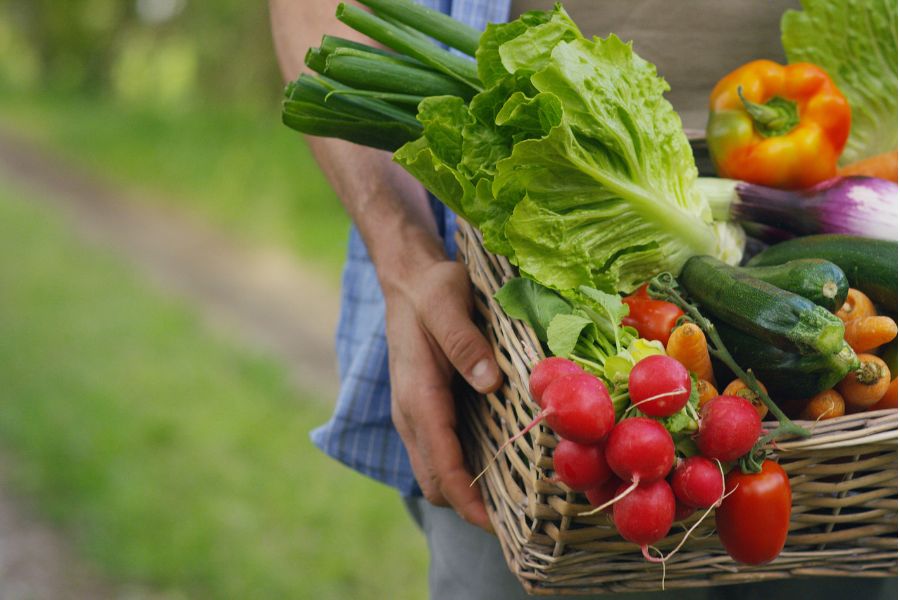Agriculture 2.0: From ‘world’s food basket’ to vibrant industry?
- Albeit India has cemented its position as a leading producer of agro products, it hasn’t been able to successfully leverage this advantage to set up a dynamic agri-based industry.
- For this, India needs to build capabilities to harness agricultural products as raw materials for industrial applications.
- Not only will this help the country in becoming ‘Aatma Nirbhar’ (or self-reliant), it is also likely to enable farmers to obtain better prices for their crops and therefore materialize the vision of doubling their income.
- However, leapfrogging of India’s food processing sector towards high-value industrial products holds the key to realize this goal.

Verdant pastures, fertile soil, abundance of labour and a favourable tropical climate – each of these factors contributes to the bounty of agricultural produce that makes India a leading agro-producer of the world. This provides India with huge potential to emerge as a leading agro-economy of the world.
One example where India has not been able to leverage its agricultural strength is sugar. Reckoned as one of the top three producers, the country is producing sugar in excess of global demand. This is creating a supply glut in international markets, leading to decline in sugar prices fetched by farmers & exporters. The government on its part has doled out a few measures to come to the rescue of the sector such as setting a minimum buying price for sugarcane farmers and a minimum selling point for sugarcane mill owners.
To add to the woes of the industry, India has been dragged by Australia, Brazil and Guatemala to the World Trade Organisation’s Dispute Settlement body. They allege that the domestic support provided by India in favour of agricultural producers of sugarcane and sugar is trade distorting as it is contributing to a global sugar glut.
Another example of a missed agricultural opportunity is the humongous post-harvest loss in the country. A parliamentary panel report states that India suffers annual post-harvest losses of Rs 61,000 crore in production of marine and inland fisheries leading to huge loss of income for the fishermen community. This is due to numerous reasons like huge losses, faulty handling practices, inordinate delay in packing & transportation and lack of proper cold storage facilities.
The industry needs to come up with ways to productively utilise surplus produce. Sugarcane, for instance, can be used for a plethora of industrial purposes. Bagasse, the fibrous residue of the cane stalk left after crushing and extraction of the juice, can be used to generate steam and power required to operate the sugar factory.
It can also be used to create good quality wrapping and magazine paper. At the same time, molasses, another by-product of sugarcane can be used to produce rum, ethyl alcohol, acetic acid, butanol/acetone, citric acid, yeast and monosodium glutamate. Similarly, there are a number of agricultural raw materials, which could be put to other industrial uses. Some of these include:
| Crop | Potential industrial uses |
| Soyabean | Adhesives, matings, ink carrier, soap, paints/varnish, resins, plastics |
| Corn |
Coal *sulfurization, ethanol, degradable plastics, road de-icer, Super absorbants |
| Soyabean, sunflower | Diesel, fuels |
| Oilseed crops | Candles, crayons, and floor polishes |
| Coconut | Lubricants, soap, paints/varnish, resins, plastics |
| Castor | Lubricants, soap, paints/varnish, resins, plastics |
| Sugarcane | Fuel, fertilizer, electricity generation, paper, rum, ethyl alcohol, acetic acid, butanol/acetone, citric acid, yeast and monosodium glutamate |
| Seaweed | Fertilizers, cosmetics, fuel, wastewater treatment |
Source: Princeton University and FAO.
Using agricultural raw materials for industrial applications is likely to bring with it a host of benefits:
1. Diversify market and farm income
Paradoxically, India’s position as a global super-producer in agriculture is juxtaposed with low average income of its farmers. The key to raising their income lies in efficient management of the post-production segment. Instead of selling their produce in mandis and being exploited by middlemen, farmers could benefit from selling agricultural commodities to agro-processing industries. This will be a major step in revitalizing rural economies.
2. Reduce commodity surpluses and wastage
At the same time, using agricultural commodities for industrial purposes is a great way to reduce oversupply of commodities. For example, India’s mills are looking to tap export of molasses to South Korea, Vietnam, Europe, and West Asia to improve cash advisory flow and provide additional stability to the sugar sector amid demand-supply volatility. This ensues an advisory by the Union Ministry of Consumer Affairs, Food and Public Distribution to improve liquidity and clear farmers’ dues.
3. Decrease dependency on imports
While COVID-19 has led to a collapse in oil demand, it led to a surge in oil inventories and therefore resulted in protracted low oil prices, thereby reducing India’s import bill. This situation is not likely to last forever. As nations exit the lockdown and resume economic activities, the demand for fuel is going to rise. This problem can be addressed by using biofuels made from oil-seed crops such as soybean and canola. Similarly, imports of proteins, starch, enzymes, adhesives, agar, biochemicals will also significantly come down, helping the nation become self-sufficient.
A robust food processing sector
India’s food processing industry (FPI) will play a major part in this reprised role of the agriculture sector. Relatively at a nascent stage, the Indian FPI still veers around food processing, and there is minuscule production of high-value products like chemicals from ethanol.
This is despite the various endeavours of the government to support the sector:
(1) Allowing 100% FDI under the automatic route in FPI;
(2) Permitting 100% FDI in manufacture of food products and for trading (including through e-commerce) of food products manufactured and/or processed in India;
(3) An umbrella scheme called PM-Kisan Sampada Yojana to incentivise private sector investments in food processing;
(4) Rs 10,000 crore for micro-food enterprises;
(5) Priority sector lending for the food sector;
(6) ‘One district, one cluster’ system for horticulture production for volumes and quality commodities;
(7) Promotion of herbal cultivation (Rs 4,000 crore under Atmanirbhar Bharat); and
(8) Facilitative provisions under GST, income tax and customs duty.
On the brighter side, with a 10.7% share in India’s exports & the capacity to generate 11.6% jobs in the country, the FPI sector offers a tremendous scope for development. The country has to undertake focussed measures to support its food processing industry.
The first is to focus on developing technology which takes into account the diversity of resources and the needs of different agro-climatic regions in India. At the same time, efforts should be made to establish new agro-industrial plants in the production catchments. This is important because it will create employment opportunities in rural areas and utilize process waste and by-products for feed, irrigation and manure.
Lastly, channels should be established to disseminate market information to the farmers regarding how agricultural plants can be useful beyond nutritional needs and what kinds of crops need to be cultivated for the same.













Leave a comment